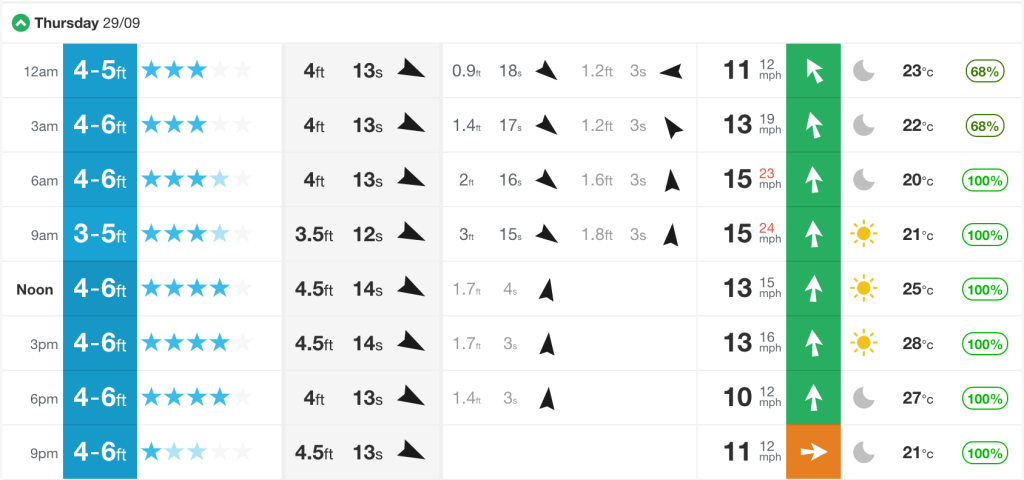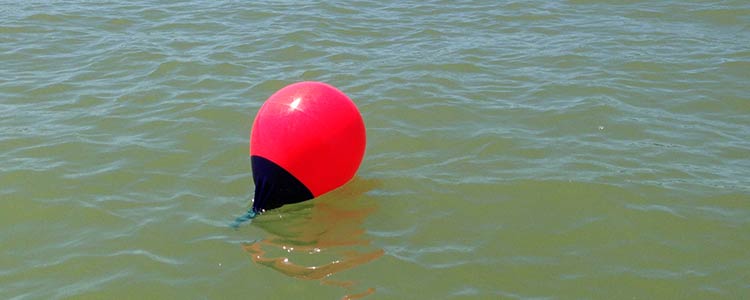I wanted to write a short additional update of info to some of our previous weather related blog posts, especially as I am nowadays looking for not just wind but also for the best waves in different areas as I travel.
There’s also a lot of new beginners that have had their course of lessons by now and might need some help with how to read the conditions, as well as a load of you that might be traveling to new kite beaches for holidays.

Wind sites
To recap on where to look for wind forecasts you can check out our previous post on weather websites.
However I find the ‘superforecast’ on Windfinder (available on the desktop version, or swipe right to view on the iOS app) tends to be more accurate. Also the ‘report’ tab shows almost real time wind readings for those spots with a local weather station.
The new Windguru Beta site also has a lot more realtime data than the standard version and I believe they have big plans for Windguru in the future.
Another great website that is getting better all the time is Windyty.com – it shows large full screen wind maps (along with other types of weather) – great for getting an overview of how the weather is going to develop in your area (and will help you learn how to study and predict it too!).
Wind Direction
 It’s worth mentioning that some spots get frequent changes in direction which can take on different characteristics. Tarifa for example is kiteable in both Levante wind (comes across the land from the left) and Poniente wind (comes from across the ocean from the right). You may expect the same spot to feel the same regardless of the wind direction but that’s not always the case. The stronger Levante wind in Tarifa is always warmer and tends to be more gusty. The Poniente wind is a lot fresher from the ocean yet tends to be lighter but more steady. The rule is, don’t always make assumptions!
It’s worth mentioning that some spots get frequent changes in direction which can take on different characteristics. Tarifa for example is kiteable in both Levante wind (comes across the land from the left) and Poniente wind (comes from across the ocean from the right). You may expect the same spot to feel the same regardless of the wind direction but that’s not always the case. The stronger Levante wind in Tarifa is always warmer and tends to be more gusty. The Poniente wind is a lot fresher from the ocean yet tends to be lighter but more steady. The rule is, don’t always make assumptions!
Wind Density
I always end up explaining to other kiters I meet why Cape Town is a different animal altogether when compared to other locations. Have a read about what wind density means in our post ‘Not all Wind is created equal’ and why you need to expect dense wind to pack a bigger punch!
Thermals
Some locations are always windier than the forecast and this kind of information you’ll be unlikely to discover without spending time at a spot, research, or chatting to the locals.
Have a search for location info on forums and online groups like Kiteforum.com, or if you are going to any of the following kite meccas then we’ve got you covered already with our Progression guides: Cape Town, Cabarete, Tarifa.
Try and do your research first and then chat with other kiters or try asking at nearby kite shops/schools to obtain information. It might well be that a quick friendly conversation on the beach the day before scores you some perfect wind on a day you may have otherwise been sightseeing!

Reading Waves
Learning to ride waves means I first have to learn how to find them. While traveling around I use the Navigator+ app which is amazing at showing the wave spots around me at a glance. The app offers location info, navigation, where to park and more, and is a must for competent kite explorers.
Apart from spot info and the forecasts available, I’ve learnt I need to pay attention to a few other stats than just the predicted wave height. The big discovery in my life has two words: ‘wave period’…
Who knew that the height of the wave wasn’t entirely dependent on the stats that show the ‘wave height’ forecast, but on the timed period between waves breaking too. I have learnt that a greater wave period means there’s some kind of physics and magic that happens out on the ocean that causes waves to be built up (and become larger) the longer the period between them. Put it this way; the longer period between waves, the longer the flatter sections or troughs are, and the longer the waves have time to build up to a nice peak for us to play on.
Take a look at this insightful guide to wave period via Magic Seaweed.
Tides
Some spots are very tidal and this can have an effect both the wind and water conditions, as well as your general beach/water access. Most beaches which have any reasonable amount of tide, will have a time when the conditions will be at their best. It could mean that at low tide you might get the flattest water, or mid-high tide if you want the waves to be at their best (or it could be the complete opposite!). Every beach is different and if you turn up somewhere new and it looks crap, don’t write it off until you’ve checked out the different states of the tide.

Currents
With tides we also get currents and this can change the effective strength of the wind.
If you have wind and current running in the same direction, this will effectively make the wind feel weaker. If the wind and current is running in opposite directions, it can make the wind feel stronger. Current can be helpful, or also completely ruin a moderate nice 15 knot breeze.
Currents occur for various reasons, often from nearby river mouths or when you have sandbanks, waves and tides together. Local knowledge is key, so ask around. Another good tip – when you’re riding around look for any bouy’s and you’ll be able to see if there is any current in effect.
Wind Patterns
The last year has seen some strange wind around the world with a dominant El Nino effect, but thankfully that is now over and we could be seeing La Nina delivering above average winds in many spots this summer.
Check out our recent blog post on El Nino if you’ve been frustrated by a lack of wind and get ready for what might come next!
There is a lot to learn about the wind and water conditions around the globe and as your understanding grows it can really help to ensure you make the most of the time at the beach.
If you are confused about any aspect of your beaches conditions let us know in the comments and we’ll do our best to help.